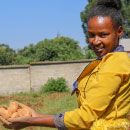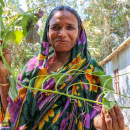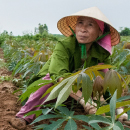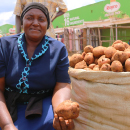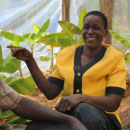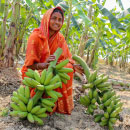Evidence is clearly important in seeking to influence the way breeders approach their work.
If gender is to be integrated in breeders’ product profiles, researchers need to develop a better understanding of trait preferences.
Why, for example, are people in sub-Saharan Africa so reluctant to adopt new banana varieties, even though the new varieties are more productive? Cooking banana is an extremely important crop in sub-Saharan Africa, nowhere more so than in the East African Highlands, where a third of the people depend on it as a staple food. And yet, despite declining yields and increasing pressure from pests and diseases, adoption rates of new varieties are lower than for other staple crops.
Looking at peer-reviewed and gray literature compiled from Musalit, an online repository of banana research, 44 publications—almost half of them from Uganda—discuss trait preferences but only four of those deal with gender. Clearly, more gender-responsive investigation is required, but even so, some conclusions emerged from this study. Irrespective of gender, farmers do want traits that overcome constraints to production and enhance incomes. But they also want traits that are important for consumption and cultural or ritual uses. Overall, they prefer traditional varieties because they are better to eat, even though new cultivars may have better agronomic characteristics.

Similar stories can be told for other root and tuber crops. Potatoes are also an important crop for smallholder farmers in Uganda, as elsewhere in Africa, but like banana, adoption rates for new varieties have been low. A multidisciplinary investigation asked what people prefer in relation to the boiled potato market. Women and men alike want red skins and yellow flesh, because that is what buyers prefer. But only women prefer larger potatoes with a mealy texture, because these are easier to process and better to eat. There are subtleties too, with poorer farmers expressing a preference for local landraces because they cannot afford improved varieties and because the local landraces need less inputs.
Across the continent, in Nigeria, the same sort of approach investigated attitudes to cassava, looking not only at gender but also at the ways people are involved in cassava processing to make popular local foods. Again, local landraces ranked highest for making gari of good quality, although farmers also appreciated some of the new, higher yielding varieties. Unexpectedly, women processors’ preferences revealed that some varieties that they ranked poorly as fresh roots made excellent processed products, underlining the value of detailed trait assessment all along the production chain.
This kind of information is now feeding into gender-responsive product profiles, enabling breeders to set their sights on new varieties that will deliver what farmers want, and as a result, will be more widely adopted.
- Gender and Trait Preferences for Banana Cultivation and Use in Sub-Saharan Africa: A Literature Review
- Prioritising quality traits for gender‐responsive breeding for boiled potato in Uganda
- Understanding cassava varietal preferences through pairwise ranking of gari‐eba and fufu prepared by local farmer–processors
- Cassava Trait Preferences of Men and Women Farmers in Nigeria: Implications for Breeding


